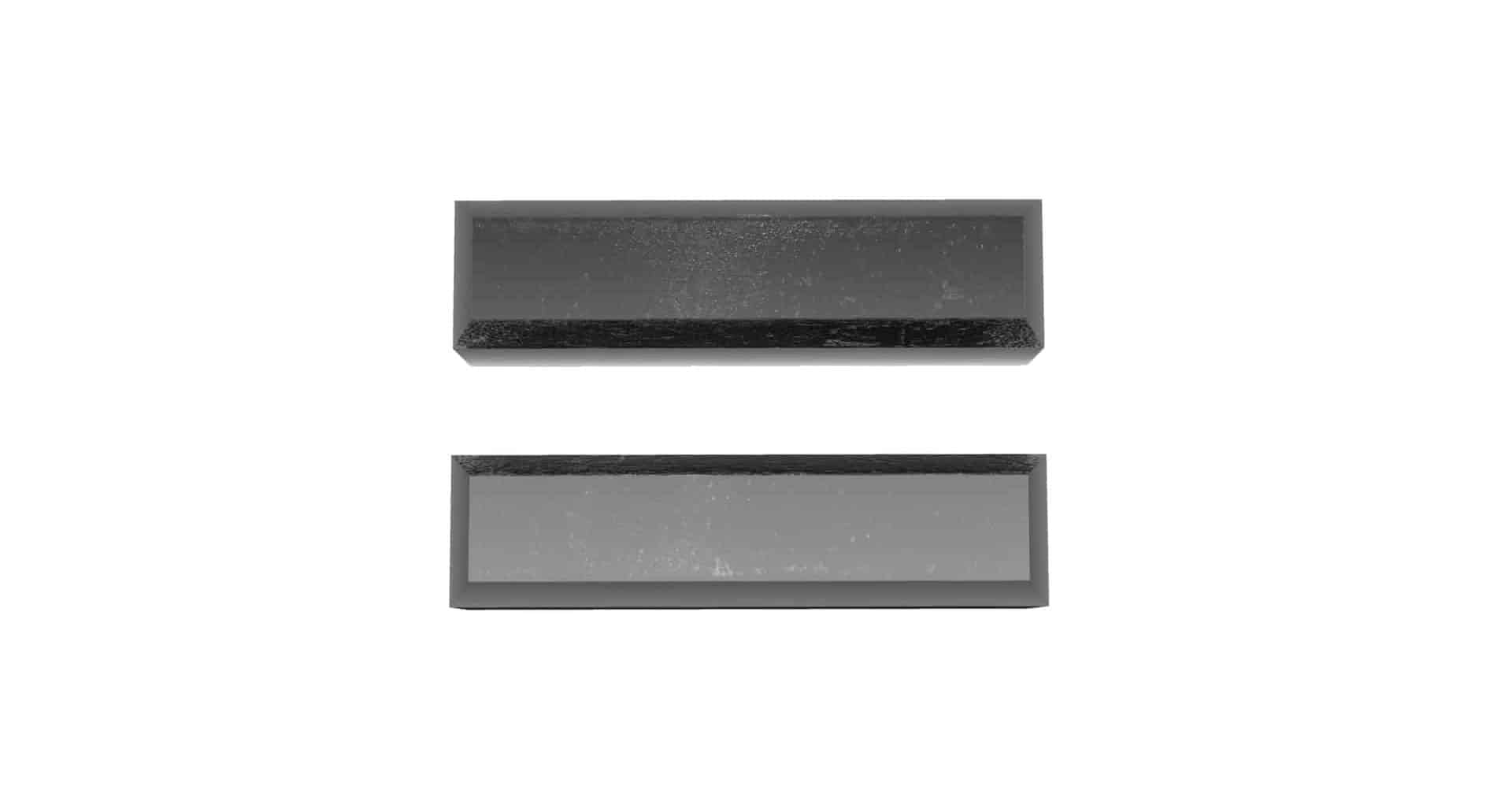
How To Create Parallel Structure in Headings: The Match Game

If you think headings are just for soccer players and uncoordinated kids on skateboards, think again. Parallel headings not only show your audience how to read your article, but they also provide a tidy framework for your writing. The keyword here is “parallel.” If your headings are inconsistent and unorganized, there’s a chance they may do more harm than good. Read on to discover how to avoid mismatched headings and reap the slick, well-organized rewards of parallel structure.
What Is Parallel Structure?
In its broadest sense, parallel structure in writing is about using the same patterns to show that ideas are of equal importance. This can happen at the word level, clause level or phrase level. For example, when creating a list of things that someone enjoys doing, you’d want to use the same forms of words/phrases to list all of the items:
- Katie likes to run, bike and swim.
- Jon likes running, biking and swimming.
Since parallel structure throughout your entire piece of content helps to keep concepts congruent, it’s important that you always watch for this writing construction. That being said, there are some areas of writing that are sometimes overlooked when it comes to using parallel structure. One of those areas is that of article headings.
How Do You Use Headings With Parallel Structure?
Headings are the backbone of your article and make up your content’s overall structure. Don’t confuse them with headers, the top margins of a document. Headers work with footers to number your pages and include your contact info, etc. If someone compliments your rad parallel header, feel free to adjust your monocle and correct them. “It’s a parallel heading, darling.”
And thus concludes my headings vs. headers PSA. Back to the wonder of headings!
Once you snag your readers with a tasty hook, your article’s headings guide them through the content on your terms. In order to provide a solid frame for the rest of your content, however, these helpful headings need to be parallel, making sure that they all follow the same grammatical structure or pattern.

What Are Examples of Parallel Structure in Headings?
In the simplest terms, headings are parallel when they match. The headings in an article might all be questions, for example:
What Are Slugs?
Why Is My Backyard Full of Slugs?
How Can I Get Rid of All These Slugs?
Perhaps your headings match because they all start with a gerund, like in these examples from an article about establishing a weekly poker game:
Choosing a Poker Table
Deciding Which Friends To Invite
Hustling Your Pals Out of Their Hard-Earned Money
Begging for Forgiveness
Headings can even be complete clauses, as seen in these examples from an article about choosing entertainment for little Ayden’s fast-approaching birthday party:
Develop a Budget
Ask Your Friends for Recommendations
Narrow Down Your Choices
Pick a Magician Already
Using headings that start with action verbs (like the example above shows) is very common.
No matter what form your headings take, that form needs to be consistent throughout the entire article. From start to finish, the headings need to match (that’s what is meant by parallelism of headings). When they don’t, they’re a distraction at best and a source of confusion at worst. Plus, they just look wicked sloppy.

You might think of it like this: If you roll into work with mismatched socks tomorrow, it wouldn’t totally ruin your expensive new suit and overall sartorial vibe — a couple of your least-observant coworkers might not even notice — but you still probably make sure your socks match before you leave the house, don’t you? You know why?
Because attention to detail matters.
Mismatched Headings
Now that we’ve seen some examples of parallel headings, let’s chuck our cheroots to the side like Clint Eastwood and check out the bad and the ugly. See if you can spot what’s off with these headings from an article about looking for Bigfoot.
Incorrect Parallel Structure:
What’s the Best Time of Year To Search for Bigfoot?
The Top 3 Places for a Bigfoot Sighting
Bigfoot Is Dangerous, So Pack Accordingly
Like Ron Swanson and a leafy Caesar salad, these parallel structure examples are completely mismatched. The first heading is a question. The second is an incomplete sentence, and the third is a complete sentence, also known in some grammar-filled circles as an independent clause. Oof.
To make these headings parallel, we simply need to pick a style and go with it. If we opt for questions, for instance, we could keep the first heading as is and revise the second and third headings to match, like this:
What’s the Best Time of Year To Search for Bigfoot?
Where Should You Look for Bigfoot?
What Should You Pack for a Bigfoot Hunt?
Voila! Now that they’re all questions, the headings follow a parallel structure. We don’t have to stick to questions, though. We can keep the third heading (“Bigfoot Is Dangerous, So Pack Accordingly”) and rewrite the first two headings so that each is a parallel heading:
Bigfoot Likes To Keep It Cool, Literally
The Pacific Northwest Is Bigfoot’s Backyard
Bigfoot Is Dangerous, So Pack Accordingly
Much better. Now that these headings are all independent clauses, they possess the awesome power of parallel structure and provide a solid framework for this incredibly useful and totally real Bigfoot hunting guide.

Multilevel Headings
So far, we’ve only looked at examples that include one set, or level, of headings. They didn’t feature any subheadings, which are used when you break up the information under one heading into even smaller headings. Let’s add some subheadings to one of our original headings so we can marvel at multilevel headings in action and learn how to use them with correct parallel structure.
In the example below, we’ll add text under the headings so you can see the article in action.
Bigfoot Is Dangerous, So Pack Accordingly
In addition to being 9 feet tall, Bigfoot also runs faster than Usain Bolt and hates human beings. As such, it’s important that both you and your campsite are well prepared.
Camping Gear
Bring a tent that can withstand punches from extremely large, hairy hands. It should also …
Personal Items
It’s important to not only look good but also have fresh breath when you finally encounter Bigfoot. Make sure your toothpaste is …
Weapons
Not many people know this, but in addition to being a fast runner and holding a black belt in karate, Bigfoot is an expert marksman. He won the silver medal in the men’s biathlon at the 1980 Winter Olympics in Lake Placid. Therefore …
See how the subheadings work? Now we have a big heading and three “baby” headings nested underneath it. Let’s break the whole shebang down. First, we borrowed the third heading from our previous parallel structure example:
Bigfoot Is Dangerous, So Pack Accordingly
After providing some context for the packing information to follow, we broke out those ideas for what to bring into three helpful categories: camping stuff, personal stuff and weapons. And, because the best SEO articles are organized SEO articles, we kicked each of those useful categories off with a descriptive subheading:
Camping Gear
Personal Items
Weapons
In addition to being devastatingly handsome on the screen or page, these subheadings help readers make sense of our packing ideas and increase the overall readability of our content. The headings are also descriptive enough that people who scroll through the content without reading will be able to quickly understand what your text is about. What’s more, these headings give us a good idea of how to structure said content as we write it. Everybody wins.

You may have noticed that these three subheadings don’t match the main heading in parallel structure, though. Nice catch. The main heading is a complete sentence; each subheading is a description of an item. That’s fine. Headings need to be parallel only to the other headings on their level.
To show you what I mean, let’s put the parts of the Bigfoot article back together and slap some labels on the headings to group them. The main headings are all first-level headings. The subheadings are second-level headings.
{First-level heading} Bigfoot Likes To Keep It Cool, Literally
Winter is the best time to search for Bigfoot. He spends most of the summer hibernating or watching reruns of “Everybody Loves Raymond.” From roughly Memorial Day to Halloween, Bigfoot is …
{First-level heading} The Pacific Northwest Is Bigfoot’s Backyard
Aberdeen, WA, is the hometown of both Bigfoot and Kurt Cobain. In fact, before Dave Grohl joined the band, Bigfoot briefly played drums for Nirvana. Sadly, his giant hands and utter lack of rhythm meant …
{First-level heading} Bigfoot Is Dangerous, So Pack Accordingly
In addition to being 9 feet tall, Bigfoot can also run faster than Usain Bolt and hates human beings. As such, it’s important that you and your campsite are well prepared.
{Second-level heading} Camping Gear
Bring a tent that can withstand punches from extremely large, hairy hands. It should also …
{Second-level heading} Personal Items
It’s important to not only look good but also have fresh breath when you finally encounter Bigfoot. Make sure your toothpaste is …
{Second-level heading} Weapons
Not many people know this, but in addition to being a fast runner and holding a black belt in karate, Bigfoot is an expert marksman. He won the silver medal in the men’s biathlon at the 1980 Winter Olympics in Lake Placid. Therefore …
In the example above, each first-level heading is parallel in structure to its fellow first-level headings. Meanwhile, all of the second-level headings in the last section are parallel to each other, but not to the first-level headings. Much like The Three Musketeers, or perhaps the kids in your high school cafeteria, headings stick to their cliques when it comes to parallel structure.
How many heading levels can you have? Technically, you can can have an endless number of headings, but it is possible to over-structure your article. Microsoft Word has nine heading styles, and WordPress has six.
Numbered Headings
The rules of parallel structure still hold firm when you stick a number in front of your headings. Headings always need to be parallel in structure (or match) the other headings on their level. It’s also imperative to remember that numbered headings and numbered lists are not the same thing.
Shocking, right?
No?
Well, it is to Microsoft Word and many other word processing programs, which will grab your numbered headings in their compu-clutches and automatically indent them.

That’s not always a bad thing, depending on how you need to format your paper or article, but if your first-level headings are numbered, they should be left-aligned along with the rest of the text.
Let’s return to our Bigfoot article one last time, add some numbers to our headings, and see what happens. (Note that for the following example, we have chosen to keep subheadings left-aligned. Your company or school may have different formatting guidelines for subheads, but the rules of parallelism remain the same.)
Bigfoot Is Dangerous, So Pack Accordingly
In addition to being 9 feet tall, Bigfoot can also run faster than Usain Bolt and hates human beings. As such, it’s important that you and your campsite are well prepared.
1. Camping Gear
Bring a tent that can withstand punches from extremely large, hairy hands. It should also …
2. Personal Items
It’s important to not only look good but also have fresh breath when you big foot. Make sure your toothpaste is …
Numbered Lists
While we’re on the topic of numbered lists, keep in mind that they should be parallel in structure as well. Here’s Bigfoot’s traditional wake-up routine in list form done wrong:
- Eats a 48-egg omelet
- Stretching
- He feeds his pet fish, Brian.
Let’s fix this list to make it parallel:
- He cooks and eats a 48-egg omelet.
- He partakes in some light stretching.
- He feeds his pet fish, Brian.
Each part of Bigfoot’s routine is expressed in an independent clause. Nice.
Use Correct Parallel Structure In Headings
Parallel headings are vital to well-organized and highly readable content. Parallel structure in your headings helps your readers navigate your ideas and lets you direct the readers’ focus as they move through your articles and blogs. Got any tips for keeping your headings in sync? Any grainy video footage of Bigfoot drumming behind Kurt and Krist? Hit the comments!
- Contractions Grammar 101: A Guide With Examples - December 13, 2023
- What Is an Antonym? Opposites 3 Ways - December 9, 2023
- Analogy Definition With Detailed Examples - December 8, 2023

